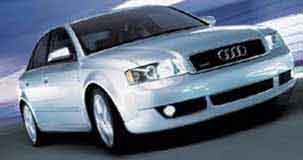

|
Intake Vacuum Leaks,Technical Tips,
NOTE: Other items to check related to vacuum leaks are located on the ABC's Of Running High BoostPage.
The large breather hose coming from the side of the engine up to the valve cover typically gets rotten on the inside part of the hose facing the engine block. The small T hose connecting the two hoses to the valve cover also gets rotten from the oil mist flowing through it and will crack on the back side. The other hose connecting the intake boot to the valve cover should be removed and checked. The two small idle stabilizer hoses should be removed and checked also as they can get blown off from the pressure. Any of the smaller hoses connected from the intake manifold to the heater/AC system should be checked for cracks.(1/98)
VALVE COVER GASKET, DIPSTICK, OIL CAP, CAM AND CRANKSHAFT SEALS - VACUUM LEAKS!
The valve cover gasket, the dipstick seal and the oil cap seal should also be checked and can be a source of a vacuum leak. Even the front and rear crankshaft seals along with the camshaft seal can be the source of vacuum leaks (this is less likely) The rear crank seal will sometimes "squeal" when the car is first started because it is leaking and allowing air to be sucked past or because it has no oil on it at first. Removing the dipstick with the engine running usually silences this "squeal". Sometimes pushing in the clutch will also silence this squeal. (Pushing in the clutch moves the crankshaft slightly) (1/98) INTERCOOLER HOSES - VACUUM LEAKS!
The accordion style hose that connects the intercooler exit to the intake manifold usually rots (from oil) and cracks at the bottom between the ribs. Remove and check it. The turbo intake hose that connects to the metal pipe and the turbo exit (pressure) hose going to the intercooler should both be removed and checked as well. The later 200TQ's with the smaller K24 turbo have some "insulation foam" inside this pressure hose going from the turbo to the intercooler and sometimes this insulation will come loose and get blown into the intercooler. Sometimes the hose clamps for these pressure hoses are just loose and under high boost the hoses will leak.
Here is a picture of the larger single pass intercooler from 20V turbo that I recently fitted to my car. Note the larger 70mm inlet pipe.There is an O-Ring on the inside of the intercooler inlet on these models that seals this pipe to the intercooler. This O-ring should be checked for leakage and replaced if necessary.
STALLING ON DECELERATION
There is an Audi service bulletin (group 25 # 91-03) listed for the 86-90 5000/200TQ cars that mentions the problem of stalling on deceleration. It indicates that the decel valve can stick open on deceleration. (this would cause a big vacuum leak and stall the engine), it recommends replacing the decel valve with part number 035-133-985A if the valve is the problem.
Go to ECU System for more details on the Decel valve operation.
TURBO INLET CHECKS - VACUUM LEAKS!
You may also want to check the cold side turbo shaft for excessive play and look for any metal shrapnel caused by worn turbo bearings allowing the blades to rub against the turbo housing. The main fuel distributor rubber boot should be visually checked for cracks with a flashlight and a mirror especially around the edge where the large clamp holds the boot to the fuel distributor opening. The decel valve located on the CIS air box assembly (behind the fender) and large rubber hose going to the fuel distributor rubber boot could also be the source of a vacuum leak. There was a service bulletin issued for the 86-90 5000TQ/200TQ's that mentions a stalling problem during deceleration that is caused by a decel valve that sticks open causing a huge vacuum leak. There are also charcoal canister purge valve(s) (late 89 has two) that should be checked for correct operation.
The intercooler end cap seals can leak and you may want to install one strap around the intercooler to hold the end caps and center core together under high boost. The internal intercooler rubber seal that seals the internal upper and lower sections of the intercooler should be checked when you remove the hoses from the intercooler. You should look inside the intercooler and make sure this seal has not blown out which would allow the air entering the intercooler to bypass the intercooler and go straight into the intake without any cooling effect.
Copyright © SJM Autotechnik™ , all rights reserved
Return to Troubleshooting Tips page. Return to SJM Autotechnik™ main page.
|
| About Us Privacy Policy Terms of Use Links Customer Service Safety Information Home |